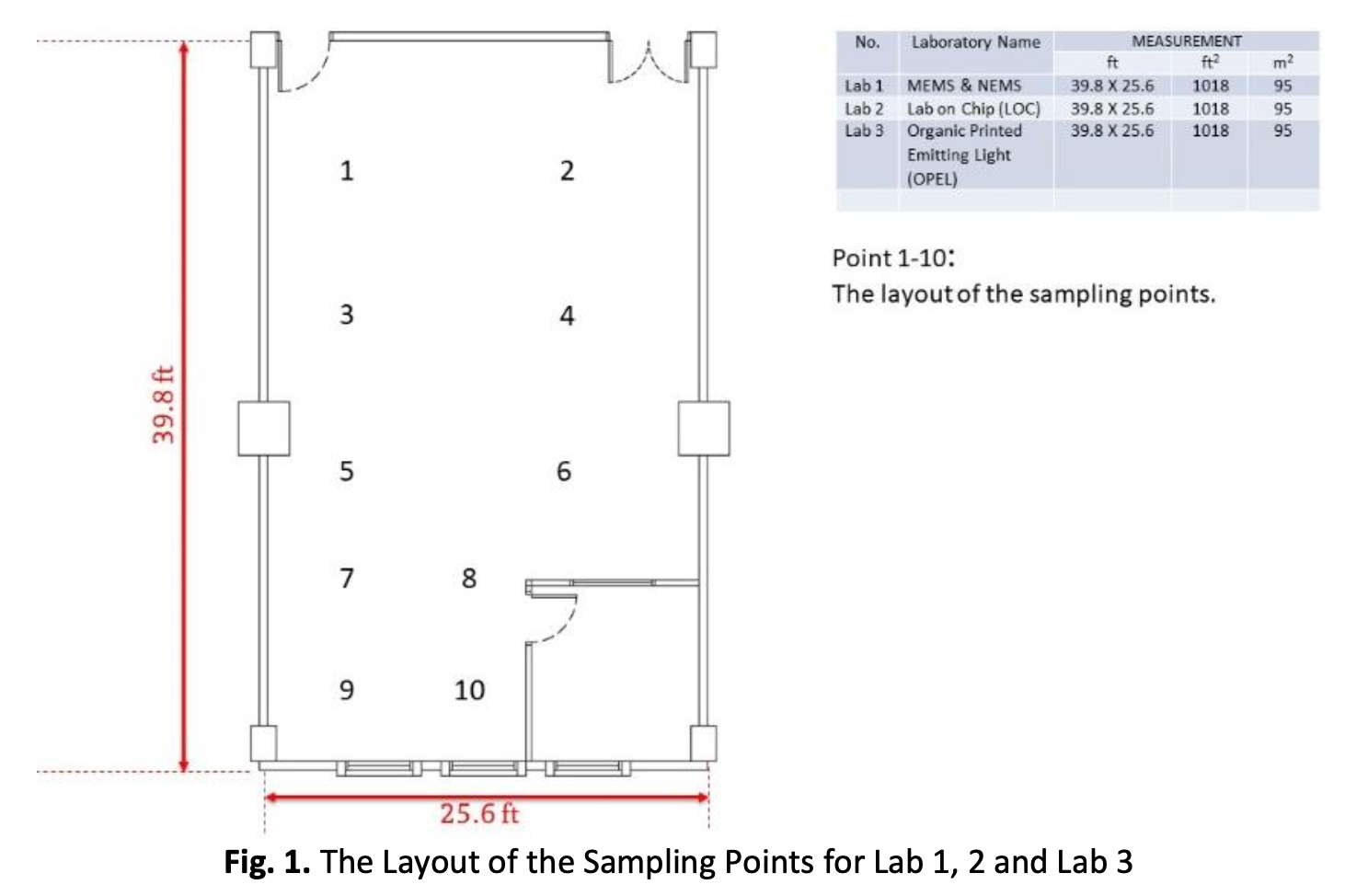Indoor Environmental Quality in Micro & Nanoelectronics Laboratories at IMEN, Research Complex, UKM
DOI:
https://doi.org/10.37934/araset.32.3.342354Keywords:
Relative humidity, total volatile organic compound, indoor air quality, particle matter, thermal comfortAbstract
The National University of Malaysia's Micro and Nanoelectronics laboratories were examined to ascertain their comfort levels. Eight laboratories were chosen as the study locations. This study aims to assess the interior air quality at six locations by measuring CO2, formaldehyde CHOH, total volatile organic compound TVOC, PM2.5, indoor temperature, and relative humidity. The thermal comfort evaluation for labs 1, 2, 3, 4, 5, and 7 is between 20.45 and 22.47 °C, which is below the range of DOSH and Ashrae. While the average readings in laboratories 6 and 8 are within the limits allowed at 23,21 °C and 23,75 °C, respectively. Five laboratories were exceeding the upper limit of RH (30–60%) but only three laboratories were still within the maximum level mentioned by the Ashrae standard. RH exceeded the ICOP limit (60%) at 70.3%, 63.7%, 75.4%, 60.6%, 62.8% and 65.5%, at Lab 1, 2,3,6,7 and 8, respectively, whereas temperature exceeded it (22.5- 26 °C) at 20.45, 22.2, 21.9, 22.43, 21.58 and 22.47 at Lab 1, 2, 3, 4, 5, 7 and 8, respectively. While the average air velocities for all laboratories are 0.17, 0.13, 0.10, 0.16, 0.12, 0.14, 0.15 and 0.09 ms-1, respectively. All the data that has been measured is found to be below the maximum level as recommended by the ASHRAE Standard 55 (2004) of 0.25 ms-1. The indoor air contaminants (CO, CHOH, TVOC, PM2.5, and PM10) met the standard level of ICOP and DOSH except for CHOH approaches ICOP (0.1ppm) at 0.1 and 0.09, at Point 9 and Point 10 for laboratory 3 compared to other laboratories where the concentration obtained is lower. The highest laboratories average concentration of PM2.5 was 13 µg/m3 determined in Lab 3, which was the most actively utilized one because the research activity in this laboratory was working more intensively than the others. As in the study of PM2.5, the highest average PM10 concentration was evaluated in Lab 3 as 36 µg/m3. Based on observations and studies, we find that fresh outdoor air with a complete and good purifier/filter should be used to reduce the concentration of indoor pollutants.
Downloads





























